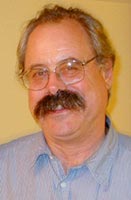John Diebold, a marine scientist who sailed the world’s oceans for more than four decades using sound waves to study earthquake faults, underwater volcanoes and other normally hidden features of the seabed, died on July 1 at his home in Nyack, N.Y. The apparent cause was a heart attack, his family said; he was 66.
In 1967, Diebold was a college dropout with a thin résumé of odd jobs and guitar-playing skills when he started doing semiskilled labor at Columbia University’s Lamont-Doherty Earth Observatory, in Palisades, N.Y., where he spent almost all his career. At that time, scientists were refining the sometimes dangerous job of sending sound waves to the seafloor and underneath it, and using the echoes to form images of what lay below. Such images, showing underlying sediments, rocks, faults and other features, became fundamental in studying the structure of the seabed, forming the modern theory of plate tectonics, and understanding earthquake hazards in many places. First put to work in the Lamont shop scaling rust off old winches and tapping out corroded screw holes, Diebold displayed an extraordinary knack for both mechanics and science. He went on to become a sought-after expert in understanding how sounds propagate through water and earth, helping pioneer methods and instruments commonly used today in a wide range of ocean research, and serving as chief scientist on many research ships around the world.
He is survived by his children, John H. Diebold of Nyack, and Beatrice Schleyer of Brooklyn, N.Y., and his former wife, Betti Schleyer. Other survivors include his companion, Glenna Marra, of Upper Nyack, N.Y.; a sister, Barbara Diebold Wick of Northfield, Ill.; brothers William Diebold of Portland, Ore., David Corcoran of Northvale, N.J., and John Corcoran of Tivoli, N.Y.; stepbrother John Sylvester of Chapel Hill, N.C. stepsisters Joan Wise of Washington, D.C., Clare Strickler of Devil’s Hill, N.C., and Anne Sylvester of Vineyard Haven, Mass.; and numerous nieces and nephews. His youngest sister, Beatrice Hart, died in 1996.
Diebold’s last major project was a cruise this March along the northern coast of Haiti, to image the undersea portion of the great fault that shook the capital of Port-au-Prince on Jan. 12, killing over 200,000 people. The results of this project, carried out by five institutions, is not yet published, but they are expected to help clarify the mechanics and history of the fault, and help scientists understand where future quakes may come. The ship also delivered relief supplies to Port-au-Prince. As usual, Diebold brought along his guitar. Cecilia McHugh, a Lamont seismologist who served as chief scientist on the cruise, said he could be seen at sunset on the fantail of the ship, making music. Then, he returned to work: with the team working the airguns around the clock to gather data, he had taken the midnight shift to monitor the equipment.

